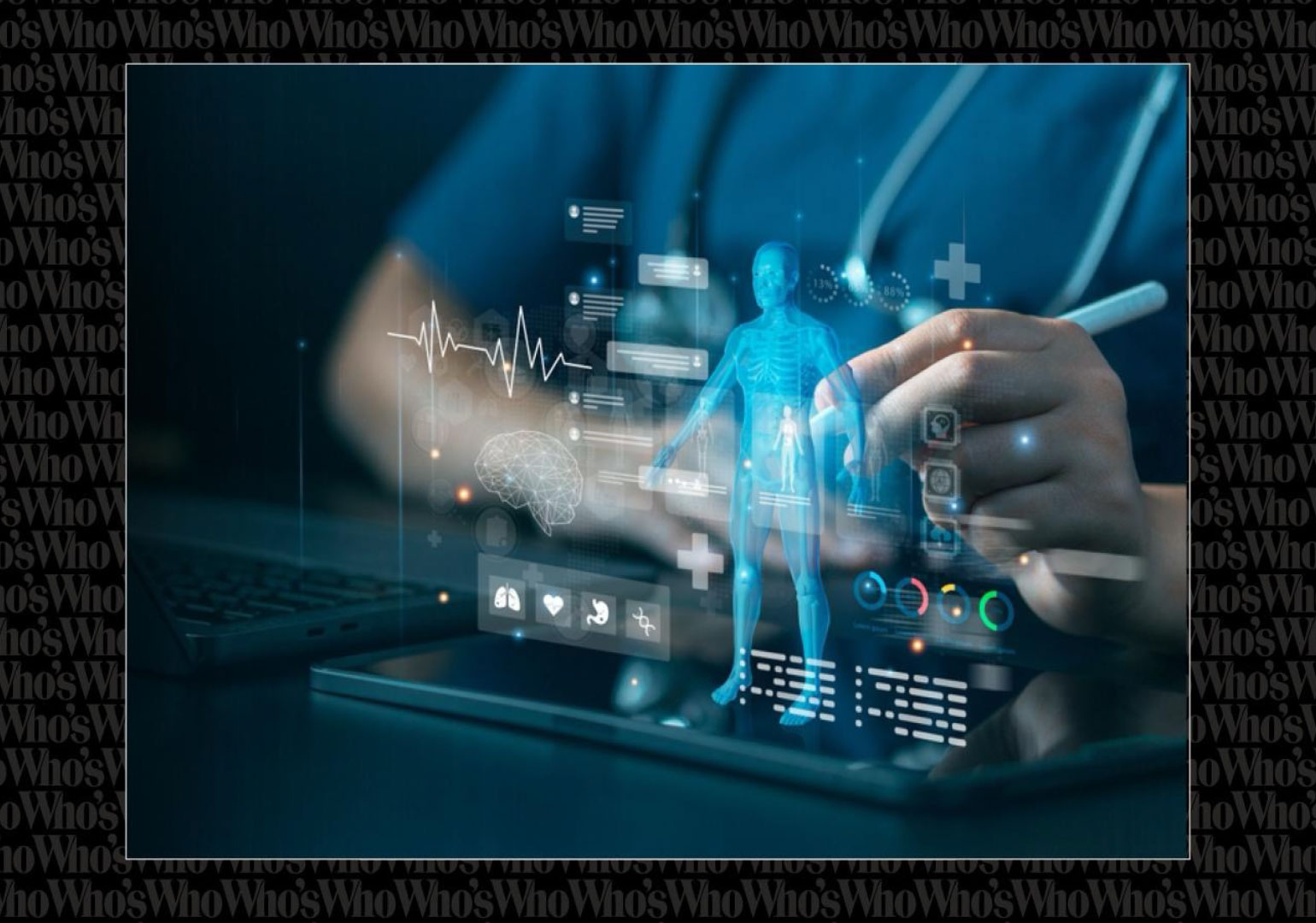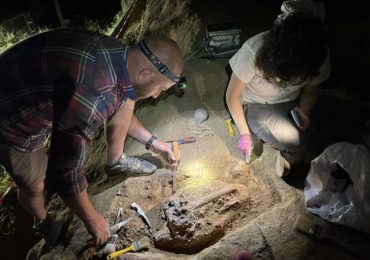Author: Dr. Thomson Wasiolek
Dr. Thomson Wasiolek seeks to establish himself as a pioneer in the rapidly emerging field of artificial intelligence in biotechnology, which has the potential to radically accelerate research and boost profits in biotechnology, the pharmaceutical industry, and related medical industries by reducing research costs and quickly generating new products for additional revenue.
There is a revolution going on right now in companies applying AI to accelerate drug research, creating biological computers, and improving medical diagnoses, particularly through applying machine learning to synthetic biology. Both machine learning and synthetic biology are new disciplines creating the future. Their combination is powerful.
Machine learning involves inputting huge troves of data (in this case biological data) to a neural network (a model) to generate predictions, categorizations, or outputs like new drug molecules by training (not programming) the neural network. A neural net is a computing model which mimics the human brain where electronic “neurons” called neurodes are interconnected to each other via links as neurons in the brain are interconnected via synapses. Large Language Models (LLMs) like ChatGPT act as transformer neural nets. “Learning” takes place as the data set (which has been turned into numbers) iteratively approximates or becomes like the training set through modification of its “weights,” outputting novel drug molecules, etc.
Synthetic biology is a novel area of biotechnology and medicine. Synthetic biology involves the modification of existing biological entities, such as genes, proteins, and drugs, or the creation of novel biological entities including NEW genes, proteins, and drugs.
The technology business revolution involves combining machine learning with synthetic biology, creating companies of the future. Thereby, much of the research involved in generating and testing new drugs or analyzing medical images can be done in silico (on a computer) prior to doing so in the laboratory radically reducing research costs and accelerating product discovery both increasing revenues hence profits for biotech, medical clinics, and pharmaceutical companies.
Business Opportunity in Pharmaceutical Companies: Accelerating Drug Discovery
There exists large numbers of molecule databases on the internet. These can be used to do computational drug discovery. These libraries can be computationally perused to identify drug-like molecules. Machine learning can then determine the most efficient chemical synthesis approaches to creating a drug candidate in the wet lab (with the fewest steps with available reagents).
The next step is to do silico testing of the drug molecule to see if it fits a protein binding site with docking software.
The final step is to synthesize the drug molecule in the wet lab, using AI to determine the chemical synthesis pathway, quickly creating profitable new drugs for pharmaceutical companies.
Business Opportunity in Stem Cell Research Companies
Stem cell research is also a new area which offers potential cures for Parkinson’s, juvenile diabetes, multiple sclerosis, paralysis, and many other medical conditions and several companies are already working on this. A stem cell is a cell in a nascent state that can turn into any type of cell. Moreover, stem cells contain the promise of generating new organs to be transplanted into humans without any need for immunosuppressive drugs as the organ needing to be replaced can be grown from a patient’s own stem cells (part of the growing area of Regenerative Medicine). Moreover, the technology now exists to reprogram adult cells with transcription factors, like an adult skin cell, to be a nascent or pluripotent stem cell, and then reprogrammed again to become any needed type of cell like a neuron. This obviates the controversy of using embryonic stem cells, i.e. no embryos need to be destroyed.
Business Opportunity in Machine Learning: Enhancing Medical Diagnoses in Medical Clinics
Machine learning in medical imagery can detect medical anomalies or perform early detection of developing medical conditions and identify and categorize those conditions. Accuracy over humans often occurs by using a training set of previously identified medical conditions in images. Costs can be saved by analyzing conditions faster and with more accuracy and fewer mistakes. Companies may create machine learning based medical image diagnostic systems, which can then be sold to medical establishments.
Business Opportunity in Computing: Biological Computers and Databases
Scientists are now beginning to create biological databases and biological computers, which can potentially store much more information and process it at a much higher speed than traditional silicon electronic technology. This represents a potential new area for the computing business. To create a biological computer or a biomolecular computer one has to first create biological logic gates. A computer, after all, is fundamentally just a combination of logic gates. What is a logic gate? It is a small hardware unit which has inputs and produces an output according to truth tables. Recently, a number of synthetic biologic gates, including AND, OR, NOR, NOT, exclusive OR or XOR and NAND gates, have been engineered. A biological adder circuit (fundamental component of any CPU) has already been created out of biological XOR (does the summation) and AND (does the carry) gates.
From biological logic gates and their combination biological circuits can be created, and hence an entire biological computational system can be created.
The area of biological or biomolecular databases is perhaps more advanced. A company in England has created a biomolecular database using nanopores with storage, retrieval, and search capabilities that has encoded all of Shakespeare’s works through something called nanopore technology. A biological database can store much more information in a smaller space than a silicon database and process it faster as well.
The Future of AI and Synthetic Biology Businesses
The future consists of at least five things: integrating deductive AI with inductive AI, creating virtual cells, designing our own biology, investing in research, and automating scientific research.
The Future of AI
The future of AI will involve integrating deductive AI, like automated syllogisms and semantic nets with inductive AI-like machine learning. These will truly be AI systems that can simulate more aspects of human reasoning.
Creating Virtual Cells
All organisms, including plants, animals, and humans, are just complexes of cells. Scientists are working towards creating complete in silico models of cells.
Designing Our Own Biology
Humanity is now starting to design its own biology. The future resides in synthetic biology and neurotech. First this will be done to alleviate diseases, but eventually also to improve the human condition, such as extending longevity. There will be an ethical question as to who gets these treatments and improvements.
Investing in Research
The United States is in danger of losing its innovative edge to the Chinese by limiting university and governmental research funding and placing restrictions on universities from attracting the best talent from anywhere in the world. We also need to be more generous with our HB1 visas to keep the greatest scientific and technological talent in the world in the US.
Automated Scientific Research
It may be possible to automate parts of scientific research for example in the area of synthetic biology. This can be done by automated searches and filtering in chemoinformatic databases all of the way through robotically automating parts of wet lab research. Computers or AI systems and robots can go through many scientific scenarios much faster and more accurately than human researchers can.
About Marquis Who’s Who®:
Since 1899, when A. N. Marquis printed the First Edition of Who’s Who in America®, Marquis Who’s Who® has chronicled the lives of the most accomplished individuals and innovators from every significant field of endeavor, including politics, business, medicine, law, education, art, religion and entertainment. Who’s Who in America® remains an essential biographical source for thousands of researchers, journalists, librarians and executive search firms around the world. The suite of Marquis® publications can be viewed at the official Marquis Who’s Who® website, www.marquiswhoswho.com.
S















